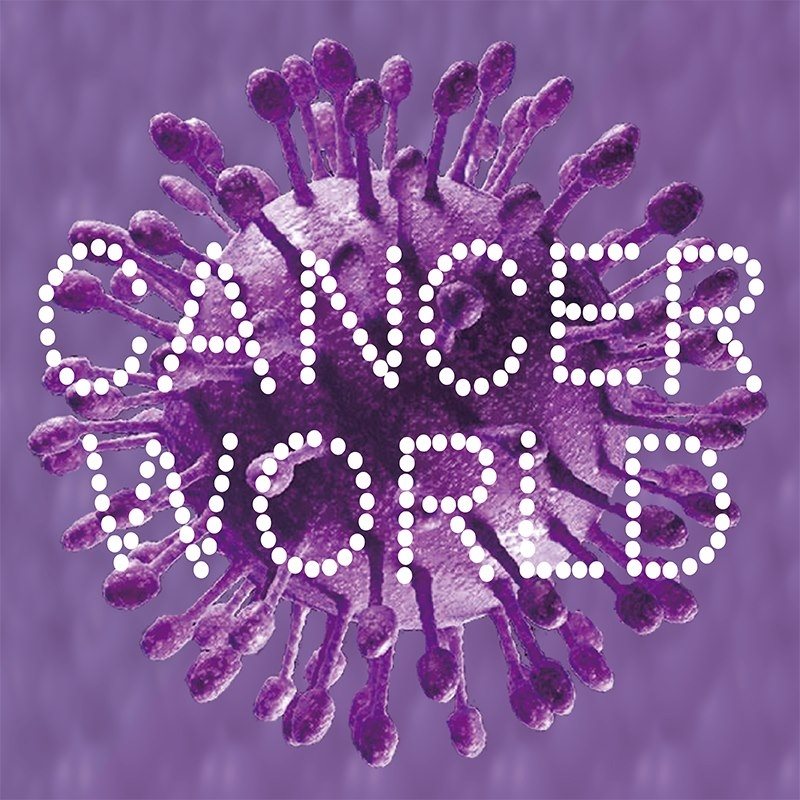
ROLE OF THE TUMOR
Cancer and toxicity go together. The role of tumors is to store or
sequester the toxins to a small circumscribed area to keep the
poisons confined and prevent them from spreading. We know that tumors
are highly toxic because when conventional cancer therapies break up
a tumor very quickly and suddenly release cellular components into the
bloodstream (a situation referred to as tumor lysis syndrome),1 this
disturbance releases so much toxicity (or poison) that the person may
die.
Researchers noted over twenty-five years ago that breast tissue
stores toxic chemicals such as polychlorinated biphenyls (PCBs). They
observed elevated levels of PCBs and other chemical residues “in fat
samples from women with cancer, compared with [women] who had
benign breast disease.”2 Investigators concluded that “environmentally
derived suspect carcinogens” likely play a role in the “genesis of
mammary carcinoma.”2 Looking at the issue of cancer and toxicity from
another perspective, an independent researcher examined root canals and
oral infections in nearly four thousand women who had lung or breast
cancer and found that in 100 percent of the cases—without a single
exception—the oral health problems were on the same side of the mouth
and body as the cancers.3
We have known for even longer—nearly a century—that populations
exposed to toxic substances have higher cancer and tumor rates. This is
especially the case for people living or working near, downwind or down
river from chemical factories, oil refineries, toxic waste dumps and
other entities that spew poisons. The observation is inescapable—people
exposed to toxins get cancer.
One of the best books ever written on this subject is The Secret History of the War on Cancer
by Devra Davis.4 Dr. Davis wrote that in the 1930s, researchers in
countries around the world (including Argentina, Austria,
England, France, Germany, Italy, Japan, Scotland, and the U.S.) all came
to the same conclusion: “Where people lived affected getting cancer.”4
Like these 1930s researchers, European doctors have understood the
role of toxicity in causing cancer for a long time. Dr.
Natasha Campbell-McBride, popularizer of the Gut and Psychology Syndrome
(GAPS) dietary protocol, went to medical school in Russia and says,
“In Russia and Europe, it was always known that toxicity caused cancer;
there was no question about it” (personal communication, May 2017). On
the other hand, if you ask an American oncologist “Why did I get
cancer?,” the oncologist will look at you like a deer in the headlights
and mumble something about genetic mutations.
TUMORS COME AND GO
In most cases, tumors have a limited life span. In fact, tumors come
and go throughout our lives. You may have many tumors today and none
tomorrow— if your body is working as it should—because you have a
natural ability to remove toxins. With effective detoxification, the
tumors are no longer necessary, and your body can dissolve, neutralize
and eliminate them. “Spontaneous remission” is the medical term that
describes the body’s ability to dissolve and excrete tumors, even
life-threatening ones. The tumors just disappear. Spontaneous
remission is a well-documented phenomenon in the biomedical
literature.5,6
Pathologists find far more tumors and cancers in autopsies (such as
in victims of auto and other accidents) than doctors diagnose in
living patients in their offices. A 1993 report noted that whereas 1
percent of living women between ages forty and fifty have “clinically
apparent breast cancer,” almost two-fifths (39 percent) of autopsied
women in the same age group show evidence of breast cancer.7
CHEMOTHERAPY HAS IT BACKWARD
Sadly, there is no guarantee of experiencing spontaneous remission.
In the modern era, it is easy to become overly toxic from
repeated exposure to internal toxins (endotoxins) and external toxins
(exotoxins). When we cannot detoxify quickly enough, then tumors,
although necessary, can grow out of control.
Josef Issels, MD, who recognized that tumors are “a late-stage
symptom of a generalized illness affecting the whole body,” developed
one of the most successful approaches to address cancer.8 He wrote that
“a tumor can only develop in a diseased organism” and that “the tumor
is a symptom of that illness.”8 Operating on the premise that “optimal”
cancer treatments need to have a “causal” focus, Dr. Issels was able
to restore many late-stage terminal cancer patients to good health.
The prevailing treatment model of the “War on Cancer”—kill the
tumor—is completely backward. Attacking a tumor actually may cause a
kickback effect wherein the body struggles harder to keep the tumor
functioning. The body wants the tumors. Tumors are the answer, not the
problem.
In this context, it should come as no surprise that studies have
found that chemotherapy can make tumors more aggressive. In 2012,
for example, news headlines announced the “shocking” and “completely
unexpected” finding that chemotherapy can “backfire” and make
cancer worse.9 Reporting on a prostate cancer study published in Nature
Medicine about “treatment-induced damage to the tumor
microenvironment,” 10 the news summary noted that “healthy cells damaged
by chemotherapy secreted more of a protein called WNT16B, which
boosts cancer cell survival.”9
A more recent report (July 2017) in Science Translational Medicine
on breast cancer came to much the same conclusion, stating that
chemotherapy promotes circulation of tumor cells in the bloodstream.11
In the researchers’ words
“chemotherapy, despite decreasing tumor size, increases the risk of metastatic dissemination.”11
It should be readily apparent that the answer to a toxic condition is
not more toxicity. Chemotherapy is highly toxic. That is why
courageous investigators have been sounding the alarm about chemotherapy
for many years. A comprehensive review in 1992 of chemotherapy
clinical trials and publications described the success rate of
chemotherapy as “appalling,” with strong evidence pointing to “the
absence of a positive effect.”12 In 2004, another major study
reviewed fifteen years of chemotherapy treatments for the most common
cancers causing the most deaths; the contribution of chemotherapy to
five-year survival was minimal (about 2 percent).13
In 2015, researchers reporting on patients with end-stage cancer in JAMA Oncology
concluded that “not only did chemotherapy not benefit patients…it
appeared most harmful to those patients with good performance status.”14
The authors cautiously suggested that chemotherapy use in patients with
terminal cancer “may need to be revised.”14 They also noted that an
American Society of Clinical Oncology expert panel “identified
chemotherapy use among patients for whom there was no evidence of
clinical value as the most widespread, wasteful, and
unnecessary practice in oncology.”14
COMPLETE HEALING
For complete healing, we must address cancer’s causes. What a person
diagnosed with cancer needs most is a health-promoting lifestyle that
reduces toxicity, provides nourishment and minimizes stress. The goal of
health care practitioners who want to support full recovery should be
to locate the causes of the toxicity (both internal and external) and
work with the patient to enhance detoxification, cleansing
and purification.
There is a reason why we find evidence of detoxification practices
such as hot baths, saunas, fasting, cleanses, herbs and many
other practices in every culture throughout humanity’s history. If
ancient Greeks and Romans and native peoples from all over the world
could understand the need for detoxification—long before the advent of
the twentieth-century chemical industry—shouldn’t modern-day
Americans recognize its importance as well? As a culture, we are far
more toxic than any other civilization, and we have the diseases to show
for it.
In 2003, I developed a system of working with body biofeedback that I
now call the Koren Specific Technique (KST).15 KST practitioners locate
and release hidden areas of toxicity and stress that other health care
professionals often miss. Practitioners can use KST with anyone, no
matter their age or health challenges.
Nine years ago, when doctors diagnosed a close family member with
life-threatening brain tumors, I used KST along with the
detoxification and support principles mentioned above—and the tumors
disappeared.
The most important thing to remember is that cancer is a disease of
toxicity. The best way to achieve a true cure, therefore, is to
address this underlying cause. Recognizing that a tumor is an ally, not
an enemy, makes it possible to work to promote its function so it will
no longer be needed.
DIETARY PRINCIPLES FOR CANCER PATIENTS
A diagnosis of cancer often serves as a wake-up call to make profound dietary changes. Obviously, the first step is to
eat nothing but clean food, including pasture-fed animal products, and
to avoid all processed foods containing refined sweeteners and
industrial seed oils. The following foods support detoxification while
nourishing the body:
COD LIVER OIL: Unprocessed cod liver oil provides vitamins A and D in a range of forms. Vitamin A is the vitamin for
detoxification and the first requirement for cancer patients. Vitamin D
supports the immune system and works synergistically with vitamin A.
RAW WHOLE MILK: Raw milk is our best source of
glutathione, the body’s master detoxification compound. Plus, raw milk
provides complete nourishment in a form that is easily digested.
GELATIN-RICH BONE BROTH: Glycine in bone broth supports the liver in detoxification.
POULTRY LIVER: Liver from chicken, ducks and geese is
an excellent source of vitamin K, which provides strong
protection against cancer. It works synergistically with vitamins A and D
in cod liver oil. Plus, liver is a powerhouse of many other important
nutrients.
BUTTER: Butter is the queen of fats and provides many
compounds, specifically CLA, that help protect against cancer. Be sure
to use butter from grass-fed cows.
LACTO-FERMENTED FOODS: Fermented foods provide vitamin C and good bacteria for healthy gut flora.
REFERENCES
1. Hochberg J, Cairo MS. Tumor lysis syndrome: current perspective. Haematologica 2008;93:9-13.
2. Falck F Jr, Ricci A Jr, Wolff MS, Godbold J, Deckers P. Pesticides
and polychlorinated biphenyl residues in human breast lipids and their
relation to breast cancer. Arch Environ Health 1992;47(2):143-146.
3. Hughes F, with contributions from Dowling R. Am I Dead? Or Do I Just Feel Like It? Cancer Cured…the Coming Storm. Live Oak, FL: Hobbies for Health, 2007.
4. Davis D. The Secret History of the War on Cancer. New York, NY: Basic Books, 2007.
5. Potts DA, Fromm JR, Gopal AK, Cassaday RD. Spontaneous remission of
an untreated, MYC and BCL2 coexpressing, high-grade B-cell lymphoma: a
case report and literature review. Case Rep Hematol 2017; 2017: 2676254.
6. Ahmadi Moghaddam P, Cornejo KM, Hutchinson L, et al. Complete
spontaneous regression of Merkel cell carcinoma after biopsy: a case
report and review of the literature. Am J Dermatopathol 2016;38(11): e154-e158.
7. Black WC, Welch HG. Advances in diagnostic imaging and overestimations of disease prevalence and the benefits of therapy. N Engl J Med 1993;328: 1237-1243.
8. Issels J. Cancer: a Second Opinion, the Classic Book on Integrative Cancer Treatment. Garden City Park, NY: Square One Publishers, 2005.
9. AFP Relax News. Shock study: chemotherapy can backfire, make cancer worse by triggering tumor growth. Daily News, August 6, 2012. http://www.nydailynews.com/life-style/health/shock-study-chemotherapy-backfire-cancer-worse-triggeringtumor-growth-article-1.1129897.
10. Sun Y, Campisi J, Higano C, et al. Treatment-induced damage to the
tumor microenvironment promotes prostate cancer therapy resistance
through WNT16B. Nat Med 2012;18(9):1359-1368.
11. Karagiannis GS, Pastoriza JM, Wang Y, et al. Neoadjuvant
chemotherapy induces breast cancer metastasis through a TMEM-mediated
mechanism. Sci Transl Med 2017;9(397): eaan0026.
12. Abel U. Chemotherapy of advanced epithelial cancer—a critical review. Biomed Pharmacother 1992;46(10): 439-452.
13. Morgan G, Ward R, Barton M. The contribution of cytotoxic chemotherapy to 5-year survival in adult malignancies. Clin Oncol 2004;16(8): 549-560.
14. Prigerson HG, Bao Y, Shah MA, et al. Chemotherapy use, performance status, and quality of life at the end of life. JAMA Oncol 2015;1(6): 778-784.
15. Koren Specific Technique. http://korenspecifictechnique.com/kst.asp.
This article appeared in Wise Traditions in Food, Farming and the Healing Arts, the quarterly magazine of the Weston A. Price Foundation, Fall 2017.



.png)






































